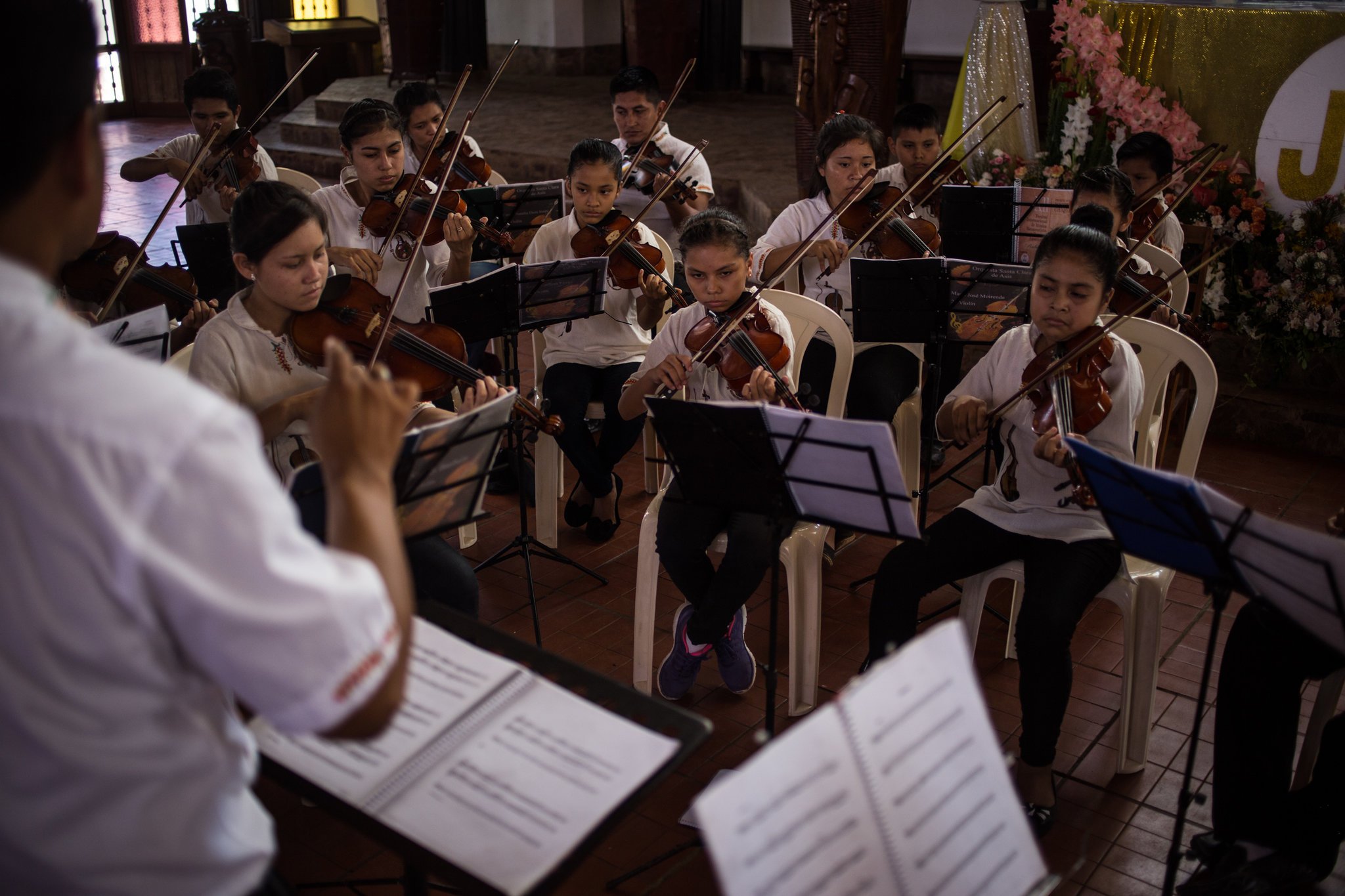Jesuit Legacy in the Bolivian Jungle: A Love of Baroque Music
By Nicholas Casey
CONCEPCIÓN, Bolivia — The aging musical score wasn’t easy to read. It was a copy of a copy of a Latin Mass by the 18th-century composer Domenico Zipoli that had crossed the Atlantic and most of South America, only to be stuffed into a box for three centuries in a derelict jungle church where humidity had taken its toll.
And then there were the termites.
The insects had eaten large tracts of the Mass, including the 22nd and 23rd measures.
But while much of the work of Zipoli has vanished in his native Europe, it has managed to survive in eastern Bolivia — along with his vast Baroque musical tradition, which hums through the tropical lowlands.
Here near the borders of Brazil and Paraguay, harpsichords and lutes can be found in the smallest villages. Luthiers have carved violins from local cedar for centuries.
And troves of ancient manuscripts, more recently rediscovered in church archives, have once again revived Zipoli and other composers of the period, whose music is played in elementary schools and on the radio.
“The Baroque is our tradition here,” said Juan Vaca, an archivist in Concepción, leafing through the crumbling pages of the Zipoli Mass with a pair of gloves and a small rod.
The score is a legacy of Jesuit missionaries who left a musical time capsule in Bolivia. By the 1700s, parts of what are now Paraguay, eastern Bolivia and southern Brazil were vast forests of seminomadic native peoples and the slave traders who hunted them. Surrounding the jungles were the Spanish and Portuguese Empires.

The town of Urubichá, population 8,000, has a music school with 500 students. CreditLena Mucha for The New York Times

Members of a local orchestra. CreditLena Mucha for The New York Times
The Jesuits descended into the jungles with the twin goals of converting indigenous tribes and sheltering them from enslavement. In the process, they formed a state-within-a-state ruled by priests and local chieftains.
This obscure corner of Latin American history had a brief moment in the Hollywood spotlight with the release of the 1986 film “The Mission,”starring Robert De Niro.
“It was about building a different society, a kind of utopia with education, self-sustainability — and of course, with music, which was the way the Jesuits evangelized,” said the Rev. Piotr Nawrot, a Roman Catholic priest from Poland who lives in Bolivia and was involved in recovering some of the original Baroque manuscripts.
Overall, the Catholic Church’s record in the area was mixed; it agreed to force indigenous groups off many missions they had constructed to solve a territorial dispute between Spain and Portugal. Refusing to leave, some of the indigenous people fought a bloody war, and many of the churches fell into ruin.
But among the lowland Bolivians, the legacy of Baroque music survived — even centuries after indigenous communities lost the tradition of reading music, learning songs by ear.
To understand just how powerful the tradition remains today, consider Urubichá, a farming village northwest of Concepción on the end of an unpaved dirt road bordering a swamp reached only after crossing 10 bridges through dense jungle.
The town of 8,000 has a music school teaching 500 students, nearly every child there. At lunchtime, children wander the village square toting instrument cases on their backs. They speak Guarayo, the native language.

In Concepción, where the archives of Baroque manuscripts are kept. CreditLena Mucha for The New York Times

A French horn lesson in Urubichá. CreditLena Mucha for The New York Times
“The Guarayo live with this music in their souls,” said Leidy Campos, 32, who teaches music in the village. “People say they were born with a violin in their hands.”
Across a field from the classrooms, Ideberto Armoye, a carpentry instructor, stood in a workshop of half-built violas and violins made from local cedar and mahogany. They were the only woods that could withstand the tropical heat, he said.
To prove his point, he pulled out a violin that had come recently from a factory in China.
“Anything happens to this instrument, look at this big crack,” he said.
While many of the era’s songs had been passed down orally through families in Bolivia, the orchestrations and choral works were thought to be lost. For years it remained one of the mysteries of the time: While Baroque music had been the bridge between the Jesuits and Bolivians, no one knew exactly how it sounded.
“I had to make a deep mental effort to imagine what it might have been like,” said Ennio Morricone, who composed the soundtrack to “The Mission” in the years before the manuscripts were discovered, using a combination of European and indigenous influences.
In the 1990s, Father Nawrot went looking for what might have remained of the written music, a search that led him to the Moxos area further west. He asked village elders in the area about manuscripts of that time. But first, he said, they had questions for him.
“For three hours they questioned me about my faith, my religion,” Father Nawrot recalled. “It was a complete reversal of roles.”
Eventually the Moxos leaders revealed something that astounded him. Thousands of pages of manuscripts, including music from baroque operas to concertos for solo instruments, some of which had been copied as late as 2005, had survived.
Via
